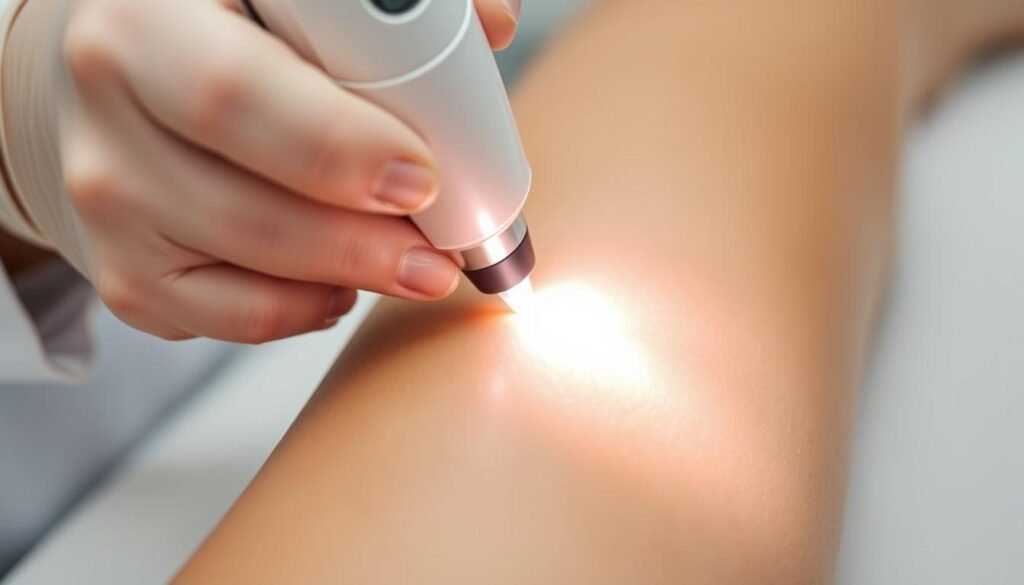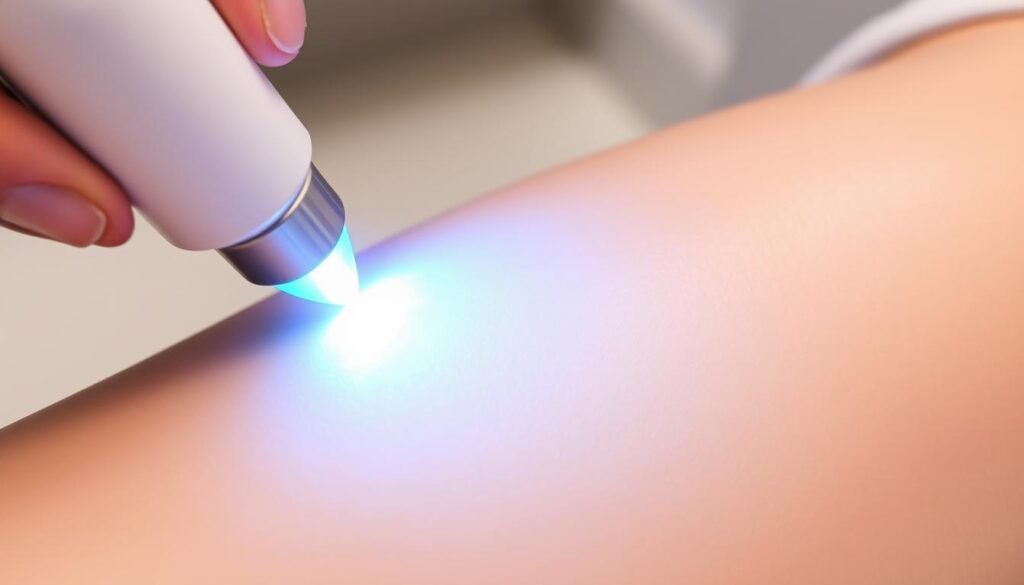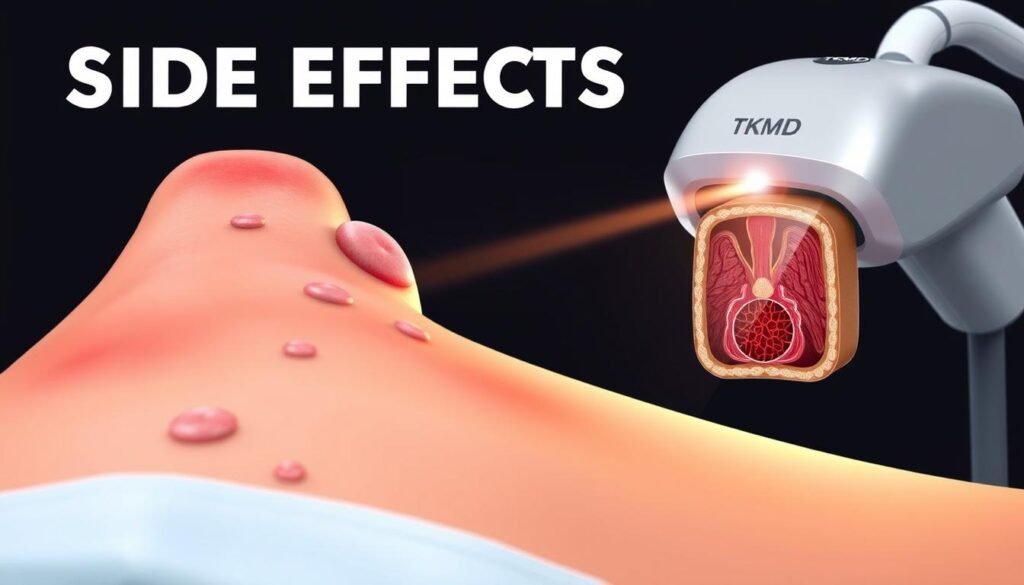Effective Hair Removal with Dermatologist Supervision
Dermatologist laser hair removal has emerged as a highly sought-after treatment for those seeking a more permanent solution to unwanted hair. This minimally invasive cosmetic procedure uses intense pulsed laser energy to target and destroy hair follicles, resulting in a significant reduction in hair growth.
Removing unwanted body hair is a constant hassle for many men and women. Laser hair removal is a safe and effective option that will save you time and money over other hair removal methods, like shaving and waxing. Through a series of treatments with experienced registered nurses, patients can achieve a seventy to eighty percent permanent reduction of hair.
The benefits of choosing dermatologist-supervised laser hair removal include superior safety and effectiveness due to dermatologists’ specialized knowledge of skin and hair biology. Modern laser technologies allow for the treatment of various skin types and hair colors with minimal discomfort and downtime.
Dermatologist laser hair removal is a medical procedure that uses concentrated light beams to target and destroy hair follicles while protecting surrounding skin. This article will explore the science behind the treatment, available technologies, the treatment process, expected results, and safety considerations.
Readers will learn about the various treatment areas, effectiveness rates, and how to determine if they are good candidates for the procedure. While results vary by individual, most patients experience significant permanent hair reduction after a series of treatments.
Understanding Dermatologist Laser Hair Removal
Laser hair removal, performed by a dermatologist, offers a highly effective method for reducing unwanted hair growth. This treatment has gained popularity due to its long-term results and the expertise that dermatologists bring to the procedure.
The Science Behind the Treatment
Laser hair removal works by targeting the hair follicles with specific wavelengths of light that convert to heat energy, damaging the follicles and inhibiting future hair growth. The LightSheer laser hair removal system is an example of a technology that safely removes unwanted body hair without damaging the surrounding skin.

Why Choose a Dermatologist
Dermatologists have specialized training in skin conditions, laser physics, and hair biology, making them the most qualified providers for laser hair removal. They can customize treatment parameters based on skin type, hair color, and treatment area, maximizing results and minimizing risks. Additionally, dermatologists can better manage potential complications and integrate laser hair removal with other medical treatments for conditions like hirsutism or folliculitis.
Benefits Over Traditional Hair Removal Methods
Laser hair removal has emerged as a popular choice for those seeking a more permanent solution compared to traditional hair removal methods. Traditional methods such as shaving, plucking, and waxing provide only temporary relief and often result in common side effects like allergic reactions and ingrown hairs.
Long-Lasting Results vs. Temporary Solutions
Unlike temporary hair removal methods, laser treatments target the hair follicle, providing a more lasting reduction in hair growth. While shaving requires daily maintenance and waxing necessitates hair regrowth, laser hair removal can offer results that last for as long as 12 months. This significant difference in results duration makes laser hair removal an attractive option for those seeking a long-term solution.
Time and Cost Efficiency
Laser hair removal not only saves time in the long run but also proves to be cost-efficient. By comparing the time and money spent on regular shaving or waxing appointments over several years, it becomes evident that laser hair removal is a more economical option despite its higher initial investment. The table below highlights the comparative costs and time savings.
| Method | Average Annual Cost | Time Commitment |
|---|---|---|
| Waxing | $500-$1000 | Several hours |
| Shaving | $200-$500 | Daily |
| Laser Hair Removal | $1000-$2000 (one-time) | Minimal |
For more information on laser energy treatments, you can visit this page.
Advanced Laser Technologies for Hair Removal
The effectiveness of laser hair removal largely depends on the technology used, with various advanced laser systems available for different skin and hair types. Dermatologists often have multiple systems available to cater to a wide range of patients.
Candela GentleMax Pro and GentleLase Systems
The Candela GentleMax Pro and GentleLase systems utilize alexandrite laser technology, ideal for light to olive skin tones with their 755nm wavelength that effectively targets melanin in hair follicles. The GentleYag component of the GentleMax Pro uses Nd:YAG technology (1064nm wavelength) specifically designed for darker skin tones, providing safe and effective treatment for a wider range of patients. For more information on laser hair removal, visit this resource.
Lumenis LightSheer DUET and Infinity
The Lumenis LightSheer DUET and Infinity systems use diode laser technology with vacuum-assisted technology to enhance comfort and efficiency during treatment. The LightSheer’s vacuum technology pulls skin closer to the light source, reducing discomfort and allowing for more effective energy delivery to hair follicles.
Other Cutting-Edge Laser Options
Other advanced laser options include Cynosure’s Elite MPX and Palomar StarLux systems, which offer multiple wavelength options and customizable settings for precise treatment. Newer laser technologies incorporate cooling systems to protect the skin‘s surface while allowing effective hair removal. This has made treatments faster, more comfortable, and effective for a wider range of skin types and hair colors.

- Different laser systems target specific hair and skin types.
- Laser hair removal is a procedure that is only as good as the technology used.
- Advanced laser technology includes various systems like Candela GentleMax Pro and Lumenis LightSheer DUET.
The Laser Hair Removal Treatment Process
To achieve optimal results from laser hair removal, it’s essential to understand the treatment process. This involves several steps, from preparation to the actual procedure.
Before Your Appointment
Before the laser hair removal treatment, patients should avoid sun exposure for 4-6 weeks and refrain from waxing or plucking. Shaving the treatment area 24-48 hours prior to the appointment is recommended to ensure the laser targets the hair follicle rather than surface hair.
During the Procedure
During the procedure, the treatment area is cleansed, and a cooling gel or device may be applied. Patients wear protective eyewear, and the laser is used to target the hair follicle. The sensation is often compared to a rubber band snap or warm pinpricks. 
Treatment Duration and Frequency
Treatment duration varies based on the area being treated, ranging from minutes for small areas like the upper lip to over an hour for larger areas. Sessions are typically spaced 4-6 weeks apart, with most patients requiring 6-8 treatments for optimal results.
Treatment Areas and Effectiveness
Laser hair removal is effective for removing unwanted hair from various areas of the body and face. This treatment can be applied to multiple regions, offering a long-term solution to unwanted hair growth.
Common Treatment Areas
Laser hair removal is most commonly performed on the face (upper lip, chin, sideburns), neck, underarms, arms, chest, back, bikini area, and legs. Virtually any area with unwanted hair can be treated, except around the eyes. The effectiveness of the treatment can vary depending on the area due to differences in hair density, thickness, and growth cycles. For instance, areas with coarse, dark hair tend to respond better to laser hair removal.
Expected Results and Success Rates
After the first treatment, patients can expect a 10% to 25% reduction in hair. Multiple sessions are typically needed for optimal results, with most patients achieving 70-90% permanent hair reduction after completing the full treatment course. The results are long-lasting, though some maintenance may be required over time.
| Treatment Area | Expected Reduction | Number of Sessions |
|---|---|---|
| Underarms | 80-90% | 3-5 |
| Bikini Line | 70-85% | 3-5 |
| Legs | 70-80% | 4-6 |
Safety and Potential Side Effects
Understanding the safety profile and potential side effects of laser hair removal is crucial for patients considering this treatment. While the procedure is generally safe when performed by a qualified dermatologist, there are potential risks and side effects to be aware of.
Common Minor Side Effects
Most patients experience minor side effects, including temporary redness, swelling, and mild discomfort, which typically resolve within a few hours to a few days after treatment. The treated area may feel like a mild sunburn, and applying a cool compress or using aloe vera gel can help soothe the skin.
Rare Complications
Although rare, more serious complications can occur, such as blistering, crusting, hyperpigmentation, hypopigmentation, and scarring. Patients with certain skin conditions, like active herpes simplex, may experience flare-ups after treatment, highlighting the importance of full medical disclosure before proceeding.
Who Is an Ideal Candidate
Individuals with dark hair and lighter skin tones typically achieve the best results from laser hair removal. However, advancements in technology have expanded treatment options for those with darker skin tones or lighter hair colors. It’s essential for patients to consult with a dermatologist to determine their suitability for the treatment, considering factors such as skin type, hair color, and medical history.

To minimize the risk of side effects, patients should protect their skin from the sun before and after treatment, avoid tanning beds, and follow their doctor’s after-care instructions. By doing so, patients can ensure a safe and effective treatment experience.
Conclusion: Is Dermatologist Laser Hair Removal Right for You?
By leveraging advancements in laser technology, dermatologists can now offer hair removal treatments that are both safe and effective for a wide range of skin types and hair colors. Most patients experience significant hair reduction lasting months to years.
A series of laser hair removal sessions, typically 6-8, spaced 4-6 weeks apart, is required for optimal results. Maintenance treatments may be needed every 6-12 months. Choosing a qualified dermatologist ensures customized treatment and the best possible outcome.
Consulting with a board-certified dermatologist will determine if laser hair removal is right for you, providing a safe, effective solution for reducing unwanted hair with minimal maintenance.


